The Badlees Story, Part 2
 |
|||
| Badlees Story | Related Articles | Acknowledgements | Badlees.com |
Part 2 (1990-1993)
 Hazleton, PA resident and local WAZL disc jockey Mike Naydock was reading his copy of The Hazleton Standard Speaker one morning when a particular article caught his eye. It was about a native of nearby McAdoo who had just finished a professional album with a band called Bad Lee White. Naydock was intrigued because he had written several songs independently and wanted to find a vessel to promote his music. The article mentioned that the band was promoted by Terry Selders who worked for a small label out of New York. Mike decided to contact him and see if this was a good fit for his music. Terry invited Mike to meet with him in an office just off Times Square, where they listened to and discussed some of Mike’s song ideas. Terry was impressed and introduced Mike to Bad Lee White’s primary songwriter, Jeff Feltenberger to begin work on new songs.
Hazleton, PA resident and local WAZL disc jockey Mike Naydock was reading his copy of The Hazleton Standard Speaker one morning when a particular article caught his eye. It was about a native of nearby McAdoo who had just finished a professional album with a band called Bad Lee White. Naydock was intrigued because he had written several songs independently and wanted to find a vessel to promote his music. The article mentioned that the band was promoted by Terry Selders who worked for a small label out of New York. Mike decided to contact him and see if this was a good fit for his music. Terry invited Mike to meet with him in an office just off Times Square, where they listened to and discussed some of Mike’s song ideas. Terry was impressed and introduced Mike to Bad Lee White’s primary songwriter, Jeff Feltenberger to begin work on new songs.
However, there was another shift within the band as it morphed from Bad Lee White to The Badlees. This was the emergence of Bret Alexander as chief songwriter and music director. Bret began to take the reins in forging the new Badlees sound, scheduling rehearsals, setting performance agendas, and eventually producing and/or engineering all of their albums.
As far as composing new songs, Bret found an ideal songwriting counterpart when Mike Naydock entered the scene. Bret’s expertise was in creating chord structures, melodies, and catchy song hooks, while Mike was talented at the intricacies of lyric writing. Starting with the first Badlees EP, It Ain’t For You in 1990, the role of Alexander as the prime mover behind the band’s sound would persist throughout the band’s career and the songwriting partnership of Alexander/Naydock would produce some of their most famous songs.

While Bret’s areas of expertise were fast becoming the studio and rehearsal room, the domain of new singer Pete Palladino would definitely be the stage. Pete admits that he had a lot of nervous energy when he started with The Badlees, so jumping on tables or swinging from chandeliers was not a thought out, deliberate plan. But as the crowd reacted more and more positively to these stage antics and word began to spread of the wild shows the Badlees put on, Pete’s climbing, jumping, posturing, and hanging upside down while singing, soon became part of the draw. Of course, his appearance didn’t hurt, and soon The Badlees were drawing a large demographic that Bad Lee White never quite did – women. And a club with a large number of young women was sure to attract an even larger number of young men, so the crowd sizes swelled.
These crowd sizes were instrumental to the early success of the Badlees since they were dedicated to performing mostly original material. The covers they did perform were usually their own interpretations of unorthodox songs for a rock band, such as the traditional “Battle of New Orleans”, the soulful James Brown hit “I Got You (I Feel Good)”, or a frantic version of the spiritual “Kumbaya”. This approach was a tough sell to many club owners in rural Pennsylvania at the time, when cover bands playing top 40 hits were the only consistent money makers. Many clubs would not even entertain the idea of booking an original band. But with the Badlees ever growing crowds, they could not be denied an exception to many of these policies and it wasn’t long before they were regularly playing their unique act out four or five nights per week.
The Badlees debut EP was recorded in Harrisburg, Pa. and Hoboken, NJ and mixed by Bret Alexander back at Susquehanna Sound. It was Bret’s debut as a producer and it featured four, well-crafted, catchy, and energetic songs, each of which could stand alone well as a bar room anthem, especially the closing number, a country-rock-ish, she-done-me-wrong song entitled “The Best Damn Things In Live Are Free”.
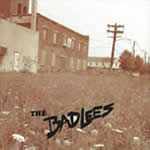 On October 10, 1990, the Badlees released the EP, which carried the deceptive title of It Ain’t For You. Put in context, the title was actually derived from the more meaningful elder-to-younger monologue of the opening song of the same name; “…It’s too late for me, but it ain’t for you”. This song starts with a driving acoustic riff by Jeff Feltenberger and gradually builds with Alexander’s layered guitars and the precision rhythm of drummer Simasek and interim bass player Ric Stehman, filling in for Steve Feltenberger, who was now in the Marines. The first song also contains an excellent coda crescendo with vocal interplay between lead-singer Palladino and Jeff Feltenberger’s background high harmonies. “Last Great Act of Defiance”, co-written by Alexander and Naydock, is perhaps the album’s best song. It has an eighties-era Springsteen quality about it with a strong, storytelling lyric and precise, rockin’ guitar riffs.
On October 10, 1990, the Badlees released the EP, which carried the deceptive title of It Ain’t For You. Put in context, the title was actually derived from the more meaningful elder-to-younger monologue of the opening song of the same name; “…It’s too late for me, but it ain’t for you”. This song starts with a driving acoustic riff by Jeff Feltenberger and gradually builds with Alexander’s layered guitars and the precision rhythm of drummer Simasek and interim bass player Ric Stehman, filling in for Steve Feltenberger, who was now in the Marines. The first song also contains an excellent coda crescendo with vocal interplay between lead-singer Palladino and Jeff Feltenberger’s background high harmonies. “Last Great Act of Defiance”, co-written by Alexander and Naydock, is perhaps the album’s best song. It has an eighties-era Springsteen quality about it with a strong, storytelling lyric and precise, rockin’ guitar riffs.
Terry Selders, still officially at Bassment Records, acted as the de facto manager of the band from afar and put out It Ain’t For You on his newly-formed independent label, Rite-Off Records. The cover of the album, taken by Ron Simasek, was a shot of an abandoned lot across the street from Terry’s apartment building on Christopher Columbus Drive in Jersey City, NJ. The band began asking Terry to come back to Pennsylvania and manage them full time, as they became more and more popular on the club scene. A series of events following the release of the EP would convince him that there was something special here and he would take them up on their offer.
First, there was positive press, mainly in local media, but also with national publications. Just like with the Bad Lee White EP, Billboard magazine once again gave them a review but on this occasion gave It Ain’t For You it’s famed “Critics’ Choice” award.
Next, The Album Network, a weekly, well-respected music industry trade paper, invited the Badlees, as an unsigned band, to participate in their CD series called “Tune Up”, which was free to radio stations across the country and had the reputation of containing cutting-edge music that may be prioritized by record companies in the coming month. This inclusion gave The Badlees much credibility with rock radio programmers, and assured that there was a good chance that many of these programmers would have already been somewhat familiar with their music before ever being approached by Terry.
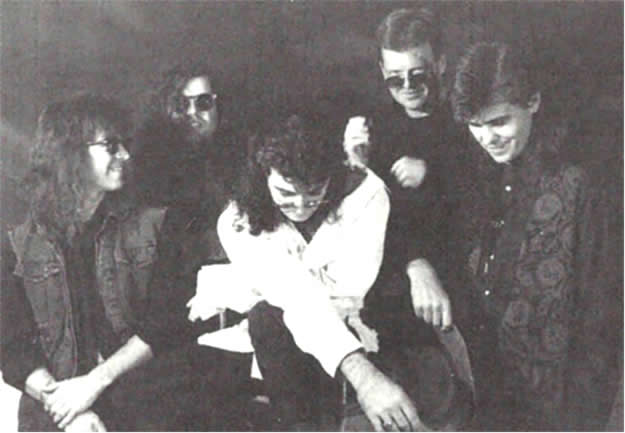 A third, fortuitous event was when the Badlees landed a gig opening for the band Firehouse at the Metron in Harrisburg. By the night of the show on February 19, 1991, Firehouse was at the absolute peak of their brief super-stardom as their power ballad “Love of a Lifetime” was near the top of the mainstream charts. Although the Badlees and Firehouse were quite different stylistically, the owner of the Metron felt they would be a good fit to open for the band. This conclusion was drawn when he heard those first, opening, strumming chords of “It Ain’t For You” and it reminded him of a Firehouse song he had heard. So the Badlees had the opportunity to perform before a crowd of well over a thousand, much larger than any other up until that point and they would not disappoint. After this show, the Metron became an important venue where the Badlees would regularly perform as headliners.
A third, fortuitous event was when the Badlees landed a gig opening for the band Firehouse at the Metron in Harrisburg. By the night of the show on February 19, 1991, Firehouse was at the absolute peak of their brief super-stardom as their power ballad “Love of a Lifetime” was near the top of the mainstream charts. Although the Badlees and Firehouse were quite different stylistically, the owner of the Metron felt they would be a good fit to open for the band. This conclusion was drawn when he heard those first, opening, strumming chords of “It Ain’t For You” and it reminded him of a Firehouse song he had heard. So the Badlees had the opportunity to perform before a crowd of well over a thousand, much larger than any other up until that point and they would not disappoint. After this show, the Metron became an important venue where the Badlees would regularly perform as headliners.
So Terry Selders left his position at Bassment Records and returned to central Pennsylvania to be manager of The Badlees full time. He would eventually move into a place in Selinsgrove that had plenty of room to park the vans, as well as space for rehearsal and extra room for band members to stay full or part time. This became the “band house” where Bret would conduct rehearsals and Terry would conduct meetings. He set up the Badlees as a corporation, with all members of the band and crew drawing a modest salary and using the proceeds from their shows for re-investment in the band and its future projects and initiatives.
Despite being intense and “hands on” when it came to management and promotion issues, Terry admits today that he never once intervened when it came to the music itself. “Bret always had my back”, he said, adding that he was always confident that he was pushing top-notch, quality music.
Armed with a dynamic young singer, an ever-expanding fan base, a new sound forged by talented songwriters, a successful debut recording, and now a dedicated, full-time manager, The Badlees were poised to move mountains on the rock scene. Despite their early success, the band remained hard-working, disciplined, and thrifty. There were little-to-no rock star excesses nor any prima donna attitudes. They knew that there was still much work ahead to get where they wanted to be and there was still one piece of the puzzle that needed to be completed.
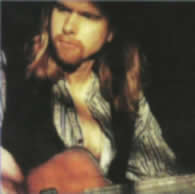 Paul Smith was a guitarist originally from Camp Hill, PA. He had also interned at Susquehanna Sound and soon became friends with members of The Badlees. Paul also did his own stint in New York City and had met with Terry Selders a few times while Terry was still at Bassment Records. Everyone liked and respected Paul and they all had discussed the possibility of him joining the band. The only problem was that they already had two proficient guitar players in Bret and Jeff and only really needed a permanent bass player. As Bret recalls, one day in 1991 he approached Paul about playing bass in the band, “just as a courtesy, a friend thing”. Being that Paul didn’t even own a bass, Bret was pleasantly surprised when he accepted the offer.
Paul Smith was a guitarist originally from Camp Hill, PA. He had also interned at Susquehanna Sound and soon became friends with members of The Badlees. Paul also did his own stint in New York City and had met with Terry Selders a few times while Terry was still at Bassment Records. Everyone liked and respected Paul and they all had discussed the possibility of him joining the band. The only problem was that they already had two proficient guitar players in Bret and Jeff and only really needed a permanent bass player. As Bret recalls, one day in 1991 he approached Paul about playing bass in the band, “just as a courtesy, a friend thing”. Being that Paul didn’t even own a bass, Bret was pleasantly surprised when he accepted the offer.
With the addition of Smith on bass, The Badlees quintet that would drive through their most productive years was now in tact. The Badlees were now ready to start work on their first full-length album. Dedicated to performing original music, it was now time to expand their library and this would be accomplished in 1991 through the prolific songwriting of Alexander, Naydock, and to a smaller extent, Feltenberger.
The result is a well-crafted, entertaining, and thoughtful album with fine, exquisite details called Diamonds In the Coal. Thematically, the album was nearly sliced in half by the light intermission of “Badlee Rap”, performed by rapper Loose Bruce, while doing a session at Waterfront Studios in Hoboken, NJ. Songs previous to this on the album are mainly pop-oriented with strong hooks such as on the opener “Like a Rembrandt”, which The Album Network picked up for its latest compilation. There’s also the crisp rocker “Just One Moment”, the mellow ballad “The Real Thing”, and the most infectious tune on the album, “Back Where We Came From” (commonly referred to as “The Na Na Song”). This latter song was the band’s first single from the album and was added to the regular rotation of several Pennsylvania rock-formatted radio stations. It features a comical monologue in the bridge section by Mike Naydock, his only appearance on a Badlees record as a performer.
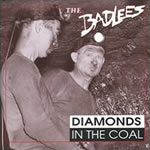 The second “half” of the album contains songs that, while still very pop-sensible and accessible, explored deeper subject matter and richer musical structure. The upbeat “Dirty Neon Times” includes some fantastic vocal harmonies by Jeff Feltenberger, while “Spending My Inheritance” is a well composed “people’s anthem” that includes harmonica by Bret Alexander and some fiddle-playing by guest performer David Rose. Perhaps the most unique song on the album is the smooth, atmospheric “Sister Shirley”, which includes a picturesque lyrical narrative by Naydock and some sweet, jazzy lead guitar by Alexander.
The second “half” of the album contains songs that, while still very pop-sensible and accessible, explored deeper subject matter and richer musical structure. The upbeat “Dirty Neon Times” includes some fantastic vocal harmonies by Jeff Feltenberger, while “Spending My Inheritance” is a well composed “people’s anthem” that includes harmonica by Bret Alexander and some fiddle-playing by guest performer David Rose. Perhaps the most unique song on the album is the smooth, atmospheric “Sister Shirley”, which includes a picturesque lyrical narrative by Naydock and some sweet, jazzy lead guitar by Alexander.
But the true masterpiece of Diamonds In the Coal is the closing song of the same name, which brings the listener into the dark, forgotten patch towns of Pennsylvania’s anthracite region. The imagery in this song’s lyric is so vivid that you can almost feel the coal dust flying, while the music sets the perfect scene with a methodic, marching rhythm by Ron Simasek on the bottom end and some authentic, ethnic instrumentation up above.
There are few things easier than to live badly and die well”
This quote by Oscar Wilde was placed inner sleeve of Diamonds in the Coal, obviously because of the play on the band’s name, but this was not the only quote on the album. Each song on the lyrics page contained its own special quote from philosophers and artists ranging from Aristotle to Andy Warhol. These extra features show the TLC and attention to detail the Badlees put into the creation of the “album” – their very first. Simasek also located the pictures that were used for the cover and within the packaging, authentic early 20th century miner photos, from the Tamaqua (PA) Historical Society. These images would also be used in band promotions around the time of the album’s release in January 1992. To the Badlees, Diamonds In the Coal was much more than an album – it was an epic event.
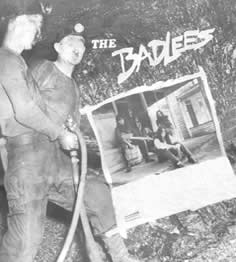 Today, Bret Alexander looks back with great fondness on the creation of this album, saying he had a tremendous amount of fun and creative fulfillment writing the songs and producing Diamonds In the Coal. Although he still holds the songs in very high regard, he laments that he doesn’t feel that the overall “sound” of the album has held up sonically through the years and has even considered re-recording some of the better tracks.
Today, Bret Alexander looks back with great fondness on the creation of this album, saying he had a tremendous amount of fun and creative fulfillment writing the songs and producing Diamonds In the Coal. Although he still holds the songs in very high regard, he laments that he doesn’t feel that the overall “sound” of the album has held up sonically through the years and has even considered re-recording some of the better tracks.
There is a definite early-nineties, polished-up quality to Diamonds In the Coal – the drum sound is snare-centric, the rhythms contain little variation, and the well-compressed vocals always seem to hang at eye-level, never quite stimulating the head nor the heart. This album may sound dated or pass’ at first glance, but a deeper listener will definitely appreciate the quality of the songs and recognize the watershed of creative musical “springs” that began their flow with Diamonds, en route to the ultimate destination of the River.
With the local success of their first full-length album, the Badlees popularity and stature continued to grow. They were invited to perform at the famous South by Southwest Music Festival in Austin, TX and soon landed a corporate sponsorship with Budweiser, who liked the fact that they played out virtually non-stop. To keep these prolific shows filled, they worked hard to grow and maintain their fan base through a custom mailing list and by setting up a “Badlees’ hotline” where fans could get the latest information. The band also occasionally booked some New York City gigs at famous night clubs such as The China Club and CBGB’s, for which they would provide bus trips for their loyal Pennsylvania fans.
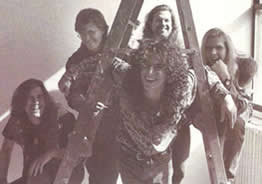 They also opened up new avenues of revenue through the merchandising of tee shirts, hats, coffee mugs, and boxer shorts and produced special cassette singles with remixed versions of their songs to sell at shows. As for CD sales, Terry Selders made a bold move to enhance the Badlees reputation with record stores by not selling the CDs themselves at shows but instead directing audience members to the local retailer where it was available. This strategy paid off as sales steadily climbed and stores gave little resistance to providing shelf space for this unsigned band.
They also opened up new avenues of revenue through the merchandising of tee shirts, hats, coffee mugs, and boxer shorts and produced special cassette singles with remixed versions of their songs to sell at shows. As for CD sales, Terry Selders made a bold move to enhance the Badlees reputation with record stores by not selling the CDs themselves at shows but instead directing audience members to the local retailer where it was available. This strategy paid off as sales steadily climbed and stores gave little resistance to providing shelf space for this unsigned band.
But the fact that the band remained unsigned to a major label through 1992 was quite a disappointment to the members some of whom still maintained “day jobs” and were enthusiastic that Diamonds would push the band over the top and garner some interest from the larger labels. By 1993, as the Badlees prepared to work on their second full-length album, they decided to take quite a different approach.
Jack Pyers had known the national spotlight, as bassist with the hair-metal band Dirty Looks in the late eighties. They were signed to Atlantic Records and had modest success with a couple of hit albums and a video on rotation on MTV. Pyers left the band in 1991 and went on to form Sharkstooth Records with some investors in the Scranton, PA area.
In early 1993, Pyers approached the Badlees about producing their next album, promising a sound that more accurately reflects the energy of their live shows. By this time, the band had already begun performing and developing new material on stage, and already had a new single, “Laundromat Radio” recorded for inclusion on the latest Album Network compilation. Ultimately, the band agreed to try a new approach and took most of the summer off from touring in order to concentrate on the new album.
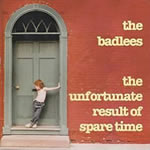 The resulting effort was called The Unfortunate Result of Spare Time, a title that the Badlees shrugged off as ironic at the time, but have since come to admit to its more literal meaning. It’s not that the music is terrible, in fact there’s some quite good and interesting material on the album, but the “result” was not quite what the band had hoped for.
The resulting effort was called The Unfortunate Result of Spare Time, a title that the Badlees shrugged off as ironic at the time, but have since come to admit to its more literal meaning. It’s not that the music is terrible, in fact there’s some quite good and interesting material on the album, but the “result” was not quite what the band had hoped for.
“Laugh to Keep from Cryin'” is a steady, building song with an excellent soundscape, while “She’s the Woman” has a classic blues-driven hard rock sound with good guitar riffs and excellent harmonica by guest Daine Paul Russell of The Dr. Groove Band. The opening two songs – “A Better Way to Save the World” and “Me, Myself and I” – each experiment with song structure, while on the closer, “A Matter of Time” the band experiments with complex harmonies. “Little Eddie” is a unique number that almost sounds like the Crash Test Dummies-do-Springsteen while the ballad “You’re Not the Only One” contains an excellent melody along with a good mixture of guitars and mandolin. “Tore Down Flat in Jackson” is, perhaps, the one song that really captures the original intent of the album, the raw, exciting “live” sound.
Much more than on Diamonds In the Coal, Paul Smith’s bass is well-represented and better animated on The Unfortunate Result of Spare Time. Also, there is a definite expansion of Pete Palladino’s vocal range and style then on previous recordings. Palladino also came up with the concept and played a part designing the cover and artwork of this album, which features a bored-looking kid leaning against the door jam of a tenement. The kid was, in fact, the son of a friend of Pete’s named Jimmy Ray, and art designer is a role that Pete would play on all future Badlee releases.
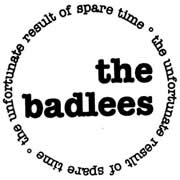 Unfortunately, what is not present is the continuance of the Badlees “roots rock” development that was started with the debut EP and enhanced with the song “Diamonds In the Coal”. While there is something definitively Pennsylvanian about those past efforts, there is nothing that truly tied The Unfortunate Result of Spare Time geographically to its place of origin. There were also other elements that deviated from the foundation the Badlees had built through Diamonds. Being that most of material was written live, Mike Naydock played a smaller role on this album, only co-writing three songs. In fact, Alexander only took partial credit for one song, with the rest being credited to simply “The Badlees”.
Unfortunately, what is not present is the continuance of the Badlees “roots rock” development that was started with the debut EP and enhanced with the song “Diamonds In the Coal”. While there is something definitively Pennsylvanian about those past efforts, there is nothing that truly tied The Unfortunate Result of Spare Time geographically to its place of origin. There were also other elements that deviated from the foundation the Badlees had built through Diamonds. Being that most of material was written live, Mike Naydock played a smaller role on this album, only co-writing three songs. In fact, Alexander only took partial credit for one song, with the rest being credited to simply “The Badlees”.
The Unfortunate Result of Spare Time was also a costly enterprise, not only because they took off so much time from touring to produce it, but also due to the fact that Pyers was paid for his services (in the role that Alexander usually filled himself) and the album was mixed at a top-notch studio, Dajhelon Recording, in Rochester, NY. The “unfortunate result” was the fact that the album was not the great leap forward that the band had hoped for, but more like a “side step” (a term used by both Feltenberger and Selders in separate interviews).

